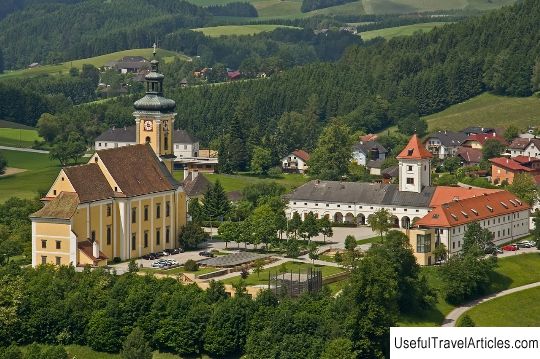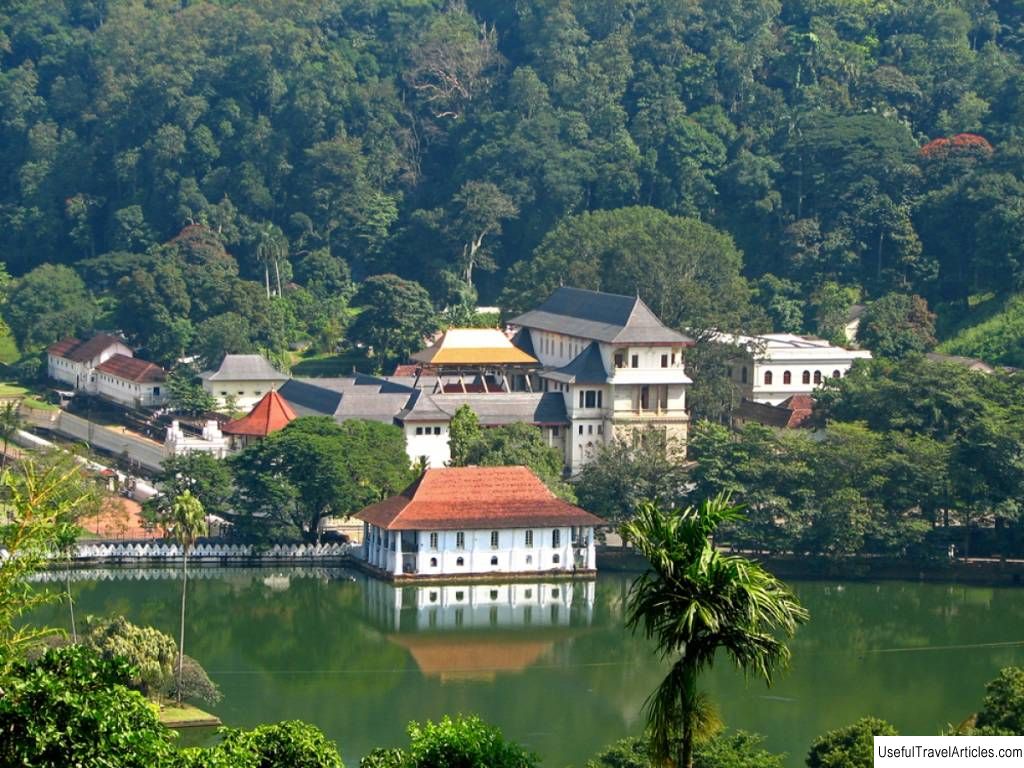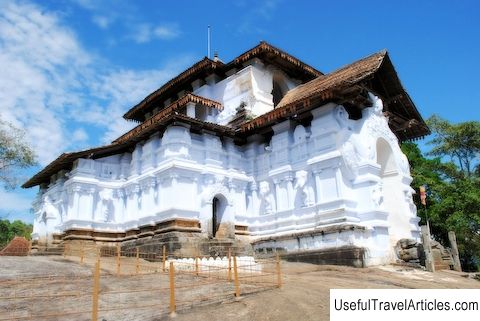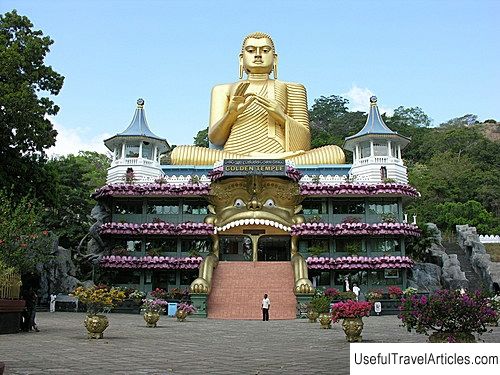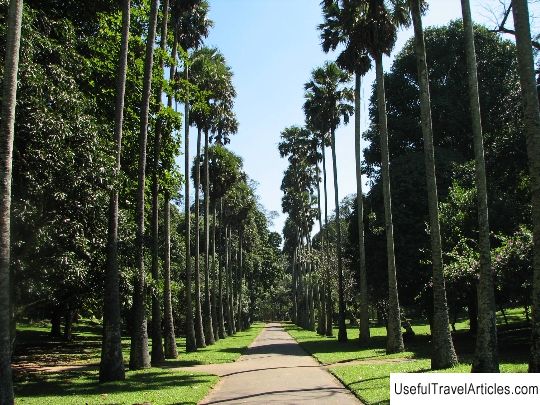Aluwihare Cave Temple description and photos - Sri Lanka: Kandy
Rating: 8,5/10 (3921 votes) 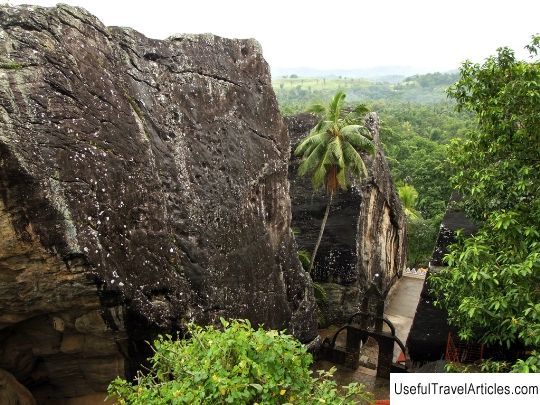
Aluwihare Cave Temple description and photo - Sri Lanka: Kandy. Detailed information about the attraction. Description, photographs and a map showing the nearest significant objects. The name in English is Aluwihare Cave Temple. Photo & DescriptionIf the idea of a monastery built in a sheer cliff sounds intriguing, try driving 3 km along the road north of Matale, 20 km from Kandy, to view Aluvihara. This is a unique group of monastic caves, picturesquely located among the rocks, which are high above the valley. Legend has it that the giant used three rocks as the base for his pot, and the name Aluvihara (Ash Monastery) refers to the ashes from cooking over a fire. Aluvihara is one of the most important cultural sites in Sri Lanka ... It is believed that Buddhist doctrines were first written on the leaves of a palm tree here, in the 1st century BC, during the reign of King Wattagamini Abaya. This Dhamma record is known as the Tripitaka and is now the main guiding Dhamma book for Theravada Buddhism. Two thousand years later, in 1848, the monks' library was destroyed by British troops. The long process of restoring the manuscript to this day is occupied by monks, scribes and artisans. For a small fee in the form of a temple donation, you can attend their workshop on writing on palm leaves. The first cave you enter contains an image of a 10 meter reclining Buddha and an impressive painting in the form of lotus flowers on the ceiling. Another is filled with cartoonish painting of the sphere of hell: before deviating from the straight path to heaven, you think twice when you see statues of devils punishing sinners in the afterlife. One scene shows a sinner with an open skull and two demons, cutting his brains. Despite the historical significance of Aluvihara, the paintings and sculptures that can be seen in his cave temples are modern. At the top is the cave of Buddhaghosha - the Jew of the Indian scientist who, is supposed to have spent several years here while working on the Tipitaki. Although historians claim that Buddhaghoshi lived in Anuradhapura in the 6th century AD, there is no clear evidence of this. However, the walls of the caves are painted with scenes showing Buddhaghoshi working on the manuscripts. The stairs lead to the top of the cliff, where you will find Dagoba (a place for storing relics) and enjoy stunning views of the surrounding valleys.     We also recommend reading Plaka beach description and photos - Greece: Naxos island Topic: Aluwihare Cave Temple description and photos - Sri Lanka: Kandy. |
